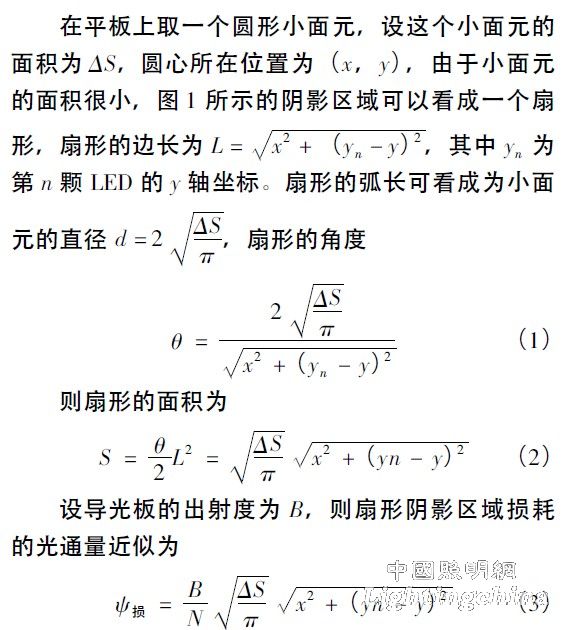1 Introduction
LED light guide plate surface light source is widely used in flat panel display, daily lighting, advertising decoration and many other fields. In the side-entry light guide module technology, the light guide plate is the propagation medium of the light source, and its dot arrangement, shape and material composition. The surface illumination, uniformity and light extraction efficiency of the light guide plate are determined. The design and manufacture of the light guide plate is one of the key technologies for implementing the backlight module and large-area illumination. A commonly used edge-lit backlight module uses a light guide plate to convert light input from a light source from a side of the light guide plate into a surface light that is uniformly outputted from the front surface. The light guide plate can be divided into a flat plate and a wedge plate according to different shapes, and can be classified into a printed type and a non-printed type according to different ways of making the bottom scattered dot pattern. Experiments show that the shape of the scattering dots has little effect on light scattering, and the arrangement of the dots greatly affects the uniformity and brightness of the output light. The backlights of the backlight system are mainly cold cathode fluorescent lamps (CCFLs) and light-emitting diodes (LEDs) [1]. Compared with traditional light sources, LEDs have many advantages such as high energy efficiency, small size, long life, flexible use, no mercury pollution, good dimming performance, no stroboscopic, and low heat radiation. The single-side side-entry light guide plate can reduce the design cost and the production cost. In order to obtain uniform surface illumination [2], this paper introduces a design method of the layout pattern of the side-light flat-plate light guide plate with LED lamp as the light source. And use simulation software such as TracePro to obtain the results of uniformity of illumination distribution to meet commercial requirements.
The single-sided side-in type light guide plate is placed on only one side of the LED lamp bead. Since the LED lamp bead is placed separately, one of the LEDs can be taken to establish a corresponding point source model, as shown in FIG.


Where N is the total number of LEDs on the side of the light guide.
The Lambert body is the ideal light type of LED [3], and the light distribution curve is round. The light emitted by the LED is solidified into a sphere. The volume of the sphere can be expressed as the total luminous flux of the LED. The volume of the unit luminous flux is 1. As shown in Figure 2, the plane formed by the two sides of the fan is cut by the sphere. The resulting volume is the luminous flux of the LED from the small corner of the sector.
